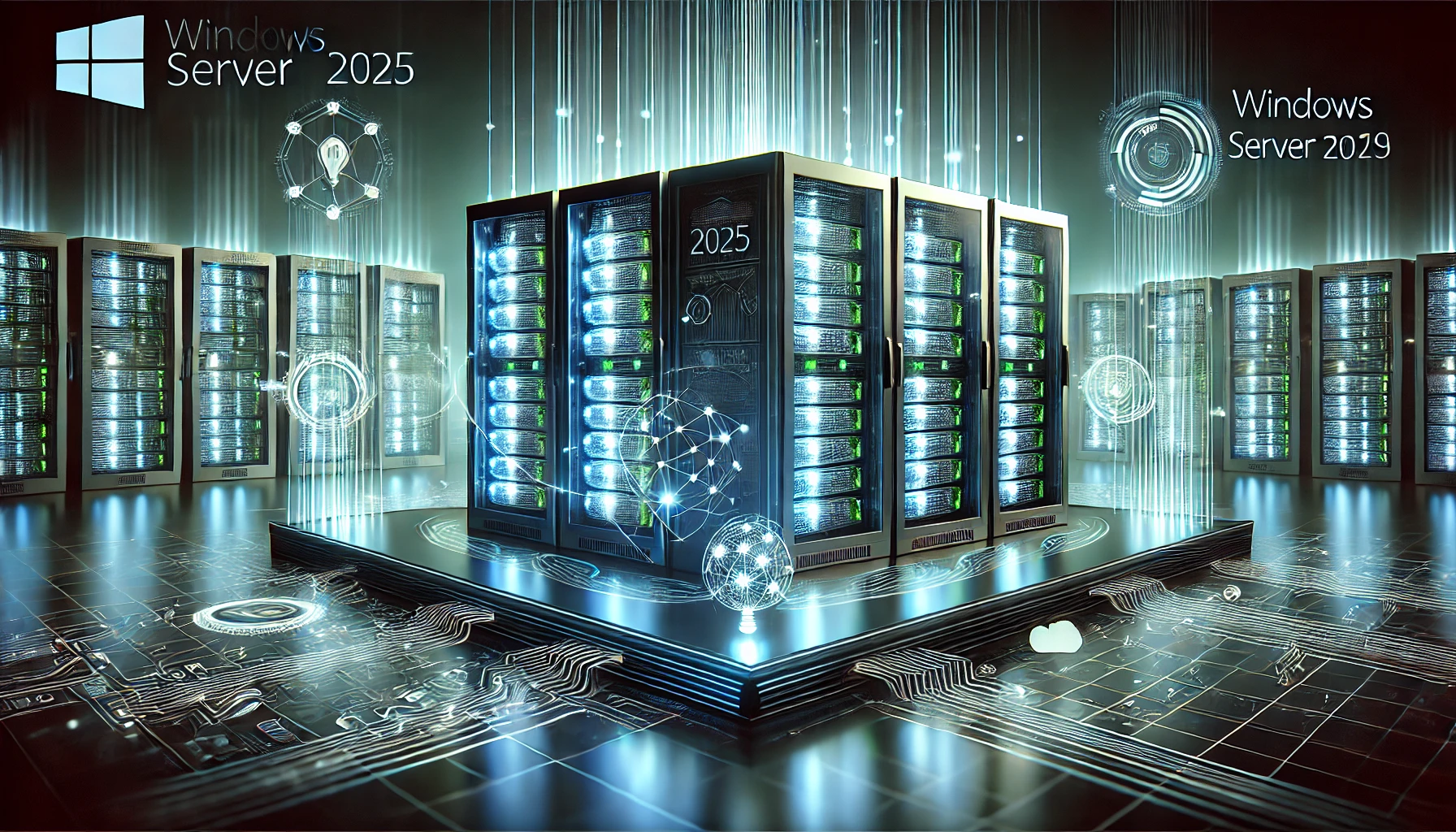Windows Server 2025 is Microsoft’s latest innovation in server operating systems, building upon the foundation of Windows Server 2022. This release includes significant advancements in scalability, security, virtualization, and Active Directory management, alongside some notable deprecations.

Key New Features in Windows Server 2025
- Active Directory Enhancements
- A key update is the increase in the Active Directory Extensible Storage Engine (ESE) database page size from 8 KB to 32 KB, addressing scalability challenges in large deployments.
- Improved tools for domain management and security monitoring make it easier to manage complex organizational hierarchies.
- Enhanced Security Features
- Server Message Block (SMB) Updates: Strengthened SMB protocols ensure secure file sharing and mitigate vulnerabilities.
- Deprecation of outdated protocols such as NTLM (NT LAN Manager) promotes a more secure authentication system.
- Networking Upgrades
- Significant updates to Software-Defined Networking (SDN) improve flexibility and resilience, enhancing traffic management and enabling the creation of adaptable network configurations.
- Virtualization Improvements
- Enhanced virtualization capabilities optimize resource allocation and improve the stability of virtual machines, making it ideal for organizations with large-scale virtualization needs.
- System Flexibility and AI Integration
- Windows Server 2025 supports a wide range of 64-bit processors and advanced instruction sets such as SSE4.2 and POPCNT, ensuring compatibility with modern hardware. AI and automation tools are increasingly integrated for predictive maintenance and optimization.
Deprecations and Removed Features
Microsoft has phased out several outdated tools and services to streamline operations:
- Removed Tools: WordPad, SMTP Service, IIS 6 Management Console, and the Windows PowerShell 2.0 engine.
- Deprecated Technologies: VBScript and the Computer Browser driver are being retired, encouraging users to adopt modern scripting and networking protocols.
Known Issues
As with any major release, some challenges have been identified:
- Localization glitches in non-English installations.
- Performance concerns on servers with over 256 logical processors.
- iSCSI environments may face “boot device inaccessible” errors, which require careful pre-deployment testing.
System Requirements
- Processor: Minimum 1.4 GHz, 64-bit compatible with x64 instruction set.
- Instruction Sets: POPCNT and SSE4.2 support required.
- Security Features: Secure Boot and TPM are necessary for specific functionalities.
Support Lifecycle
Windows Server 2025 has a planned lifecycle with:
- Mainstream Support: Until October 9, 2029.
- Extended Support: Until October 10, 2034.
This provides organizations a clear timeline for upgrades and long-term planning.
Why Upgrade to Windows Server 2025?
Windows Server 2025 brings advancements that cater to modern IT infrastructure needs:
- Improved scalability and virtualization.
- Enhanced security protocols.
- Future-proofing through modernized tools and hardware compatibility.
For organizations on older versions like Windows Server 2012 R2 or 2016, this release offers a compelling reason to upgrade, especially given its alignment with current technological standards.

